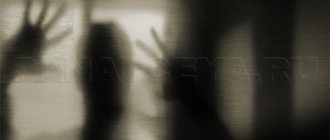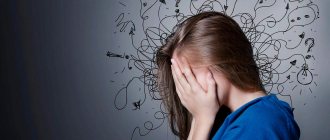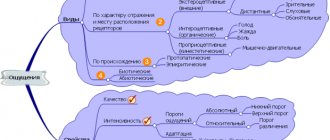Schizophrenic psychosis is an exacerbation of the clinical manifestations of schizophrenia. Most often it has an acute onset. In this case, obvious disruptions in mental functions occur. Patients experience severe delusions, hallucinations, affective disorders, and inappropriate behavior. In this case, patients need emergency care. The Leto Medical Health Center offers people suffering from this pathology treatment in a hospital setting. We help clients with various mental disorders and provide consultations.
How to get to a psychiatric clinic during an exacerbation of the disease
At the first signs of deterioration or the appearance of characteristic complaints, you should immediately contact a specialist. This is usually done by relatives of patients. You should call our medical center. It is listed on the main page of the site, as well as in other subsections.
Describe the essence of the problem to the registrar. If the situation is urgent, the patient will need to be taken to the hospital. You can do this either on your own or with our help. We have the ability to organize transportation of a person in need from their place of residence to the hospital. There will definitely be a medical professional with him.
If the doctor does not identify any contraindications for hospitalization during the initial examination, then the sick person will be immediately admitted to the inpatient department. The cost of staying in a clinical setting will be reported by the call center receptionist. The price depends on many factors.
Reasons for development
It has not yet been fully clarified what disorders in the body lead to the onset of a psychotic state in schizophrenia. Medical theorists still have an acute question about what is the triggering factor for an attack. Existing hypotheses do not fully explain all developing deviations. At the moment, only conditions predisposing to psychosis are identified.
These include:
- Hereditary predisposition.
- Disturbances received in the prenatal period of development, infections suffered during pregnancy, leading to damage to the nervous system.
- Regular use and abuse of psychoactive substances. Synthetic salts and spices cause particular concern. It is against this background that doctors most often encounter the debut manifestations of schizophrenic disorders.
- Impact of pronounced stress factors on the psyche.
- Social reasons. Living in dysfunctional families, moral and mental trauma, character traits, tendency to loneliness, apathy, depression.
Work continues to find the underlying causes of schizophrenia. For now, doctors are focusing on the available data.
General understanding of schizophrenia
Schizophrenia is a mental illness that can have severe forms and is characterized by disorders of the emotional area of a person: disturbances in thought processes, perception, behavior, inability to communicate in society. Most often, schizophrenic symptoms manifest themselves in the age period from 14 to 35 years.
The presence of schizophrenia leads to significant disabilities: the patient does not have the opportunity to receive an education or fully engage in work. It is important to note that this disease cannot be completely cured. However, the severity of its course can be controlled by a psychiatrist. By prescribing the necessary medications in a timely manner, using psychosocial support, the doctor has the opportunity to stop or minimize the manifestation of symptoms.
Symptoms
Diagnosing schizophrenia, especially at an early stage, can be very difficult. This is due to the fact that many of the signs that characterize this disease may indicate other mental disorders. In this case, the doctor sets a period of observation of the patient, during which he conducts a full diagnosis of his condition.
The main symptoms that may indicate the presence of such a pathology are the following:
- auditory, visual or tactile hallucinations appear. The patient begins to see, hear, feel what is not happening in reality;
- delusional states - the patient builds false beliefs for himself that are not shared by others. At the same time, schizophrenics are almost always very suspicious and distrustful of people;
- behavior takes on the features of inappropriate - the patient is disorganized, may forget about the rules of hygiene, appearance, and normal physical sensations are dulled. This may be accompanied by aimless walking, muttering, etc. The mood may change dramatically;
- speech becomes slurred and incoherent. A schizophrenic often independently invents his own words (sentences), giving them a special meaning that is understandable to him alone;
- emotional disturbances are clearly noticeable - apathy, indifference to what is happening, facial expressions, gestures may be absent or, conversely, become too active;
- a person creates his own inner world, withdraws into himself, and practically does not communicate with others.
Diagnostics
Correct, competent diagnosis of mental illness is the beginning of the path to its successful treatment. Due to the fact that it is extremely difficult to determine schizophrenia, especially at the first stage of its development, specialists are as consistent and attentive as possible at this stage.
The doctor regularly communicates with the patient, monitors the dynamics of the development of symptoms, their modification, etc. In addition, the following clinical studies are carried out:
- the patient’s immune status is determined;
- a general and biochemical blood test is performed;
- a hormonal profile is formed;
- additional tests are prescribed to rule out organic brain diseases;
- a general therapeutic and neurological examination is carried out;
- a rapid test is being compiled to determine schizophrenia.
In psychiatric practice, special diagnostic criteria are also known. The presence of at least one of them, and observation of it for 30 days, provides grounds for a more in-depth diagnosis of the disease. Among these criteria are:
- the presence of hallucinations (visions);
- delusions of perception (erroneous judgments about something, paranoia);
- echo of thoughts (voices in the patient’s head);
- associativity (a person avoids communication).
Causes of the disease, its prevention and treatment
Studies of schizophrenia as a mental illness have not found a single factor that could provoke its occurrence. Scientists have come to the conclusion that this mental disorder can occur when the body is exposed to various factors: genetic predisposition, psychosocial circumstances, physical and psychological exhaustion of a person, etc.
Preventive methods to prevent the occurrence of schizophrenia are especially necessary if a person has “blood” relatives with this disease. Prevention consists of regular counseling, testing and, if necessary, supportive care.
Treatment for schizophrenia can be outpatient or inpatient. The second treatment option is necessary in case of acute attacks of the disease, frequent and prolonged relapses. Patients, depending on the severity of the disease, are prescribed antipsychotic drugs of different categories. They are determined exclusively by a specialist after examining the patient.
Diagnostics
In our medical center, special attention is paid to client examination. Establishing an accurate diagnosis in psychiatry is important not only for the preparation of correct therapy, but also for social aspects. A number of diseases may pose a professional limitation, so no mistakes are allowed during diagnostic procedures.
The diagnosis includes:
Collection of complete anamnestic data. The onset of painful manifestations, their dynamics, and the presence of light gaps must be taken into account. Doctors obtain this information from the words of patients or relatives, as well as from available medical documents and studies.- Client inspection. The psychiatrist assesses the status of the functions of internal organs and the nervous system. Particular attention is paid to examining the psyche for the presence of disturbances of consciousness, delusional statements, illusory and hallucinatory visions.
- Research of laboratory tests. Patients must have their blood and urine collected to obtain general clinical and biochemical parameters.
- Taking an electrocardiogram.
The diagnostic process continues throughout the entire period of patients’ stay in the clinic. If necessary, adjustments and additions are subsequently made to the main diagnosis.
Causes of schizophrenic psychosis
The causes of the acute manifestation of the disease - schizophrenic psychosis, as well as other variants of the course of this disease have not been sufficiently studied.
Hypothesis of the occurrence of schizophrenic psychosis
The main hypothesis for the occurrence of the disease and the manifestation of an acute schizophrenic state is the idea of a disruption of the metabolic processes of the brain, a disruption of the exchange of specific neurotransmitters, which in turn are transmitters of information from one nerve cell to another.
Schizophrenic psychoses are primarily determined by such a disorder of thinking as delusions, disturbances of perception such as visual (images popping up in the head), auditory (voices inside the head) pseudohallucinations, which completely take over a person’s consciousness and subjugate all his mental activity, also at the moment of psychosis in The patient has no criticism towards the disease at all.
How does schizophrenic type psychosis manifest?
Clients most often come to our medical center in the acute phase of schizoid psychosis. Attacks can be short-term in nature in the form of isolated excesses. Often there are series of exacerbations with light intervals between them. This course is characterized by a gradual deterioration of each subsequent episode. Remissions, on the contrary, are decreasing.
Psychotic symptoms include:
- Isolated or combined hallucinations of visual, auditory, olfactory composition. One of them may dominate the others.
- Varied in content, pronounced delirium.
- Depression with manifestations of detachment from life.
- Emotional affects.
- Pursuit ideas.
- Depersonalization with complete loss of self-identification and identification with animals and even inanimate objects.
- Motor hyperactivity, or stuporous state.
- Lack of possibility of normal thinking, staying in a pseudo-real world.
- Complete immersion into oneself, into the world of one’s own illusions and hallucinations.
Symptoms of psychosis vary widely. They can build up for several days, then plateau and gradually subside. Treatment significantly softens the clinical picture and its intensity. It is very important to start therapy in a timely manner, select the correct dosage of medication, and eliminate factors that provoke and irritate the patient.
Schizoaffective psychosis
A mental disorder, the attacks of which are represented by sequentially or simultaneously occurring (at least for several days) affective and schizophrenic symptoms and ending with complete recovery or leading to the development of a schizophrenic defect. Although it remains unclear how this disease relates to manic-depressive psychosis and schizophrenia, there is a tendency to consider it as an independent disease form.
This controversial position is reflected, in particular, in ICD-10. Attacks of schizoaffective disorder are regarded in the same way as periodic schizophrenia, atypical schizophrenia, atypical affective psychosis, cycloid psychosis, etc. There are no formal obstacles to seeing schizoaffective psychosis as the result of a combination of two diseases: schizophrenia and affective psychosis. This may be indicated not only by the clinical structure of attacks of the disease and mental defect, if it develops, but also by the basic fact related to the genetics of the disease: relatives of patients have both affective psychoses and schizophrenia.
| | Read about the treatment of psychosis |
Within the framework of hypothetically existing schizoaffective psychosis, attacks of different types are distinguished. Thus, the DSM-IV distinguishes bipolar and depressive types of disorder. ICD-10 mentions manic, depressive and mixed types of psychotic episodes. In Russian psychiatry, the prevailing position is that affect-dominant and schizodominant forms of the disease are described with the types of attacks characteristic of each of them.
The affect-dominant form is characterized by the absence of attacks of schizophrenic symptoms for at least a week. In general, the ratio of affective and delusional disorders in terms of their duration during an attack averages 20:1. In the prodromal period, patients aged 10–12 years show a tendency to depressive reactions, in some cases to endoreactive depression. 2–3 years before the disease manifests itself, depression becomes more and more close to endogenous, bipolar affective phases appear, sometimes double. Depressive symptoms predominate.
The first attack of the disease mostly occurs after some kind of provocation and much less often - autochthonously. In subsequent attacks, a tendency towards autochthonous development may be revealed. The progressive dynamics of the disease is expressed by the complication of the pattern of attacks. The stabilization phase of the process is characterized by attacks that occur according to the cliché type. Regredient dynamics are manifested by the fact that attacks increasingly acquire an affective character. The residual period of the disease is marked by a sharpening of premorbid personality traits, reactive lability, and in some cases, a decrease in professional level, social maladjustment, thinking disorders and emotional deficiency. There are the following types of attacks: 1) with a predominance of delusions of perception; 2) with visual-figurative delirium of the imagination and 3) with the dominance of intellectual delirium of the imagination.
- Delusions of perception can be presented in attacks in different forms. In some cases, its development is limited to a delusional mood that lasts up to five days. In other cases, confusion and delusions of staging appear against the background of depression with depressive delusions. Finally, there are attacks in which, against a background of depression or mania, delusions of special or symbolic significance develop.
- Attacks with visual-figurative delusions of imagination often develop after exogeny (mainly somatogeny). Against the background of affective disorders, usually mania of various types, fragmented delusions of fantastic content acutely develop, lasting for 1–2 weeks. This form of the disease, like the previous one, is quite favorable.
- Attacks with a dominance of intellectual delirium of the imagination often develop autochthonously and only against the background of manic affect. In the prodromal period, during age-related crises, starting from childhood, night fears, undeveloped mental automatisms, a feeling of change in one’s self, fragmentary ideas of persecution, and bipolar mood swings are observed. At the onset of the disease, over the course of 2–3 years, the severity of manic disorders increases, affective disorders take on a continuous character, and they are joined by unstable fragments of the syndrome of mental automatism and delusions of erotic claims. In manifest attacks, delusional insights are added to mania, ultimately merging into fantastic theories and “brilliant” discoveries concerning the meaning of what is currently happening, and sometimes what happened earlier.
The disease with attacks of the latter type from the very beginning can take a furry-like and sometimes continuous course, which can lead to disability of patients.
The schizodominant form of the disease is represented by psychotic episodes, during which schizophrenic (delusional) disorders are constantly observed, while affective pathology may be absent for at least a week. In the prodromal period, bipolar affective disorders are observed in the form of prolonged (up to six months) depression with adynamia and lethargy and mania without elation. In the initial period, the severity of affective disorders increases. Depression is characterized by vitalization, ideas of low value, overvalued hypochondria, and a tendency of patients to alcoholism.
Manias are dominated by psychopathic behavior with disinhibition of drives, euphoria, and elements of foolishness. Manifest attacks of the disease often develop autochthonously. Against the background of mania, depression, or during a change in the pole of the affective phase, a delusional mood develops, and then the phenomena of mental automatism, i.e., acute paranoid syndrome. The duration of attacks can reach 3–6 months. Repeated attacks occur according to the cliché type or with a gradual reduction of paranoid symptoms. Already after the first attack, signs of a mental defect characteristic of schizophrenia are often revealed.
Recognition of schizoaffective psychosis is associated with certain difficulties due to the vagueness of the criteria for its identification.
Treatment recommendations are similar to those for recurrent schizophrenia. Back to contents
Treatment
During the interpsychotic period, maintenance pharmacotherapy is carried out by our doctors on an outpatient basis. It is important that patients are promptly shown to a psychiatrist to monitor their condition and correct the medications used. If psychosis of the schizophrenic type develops, hospitalization will be required.
Our clinic uses the following stages of therapy:
- Mitigation of acute psychotic symptoms. To reduce the manifestations of delusions, hallucinations, affectivity,
neuroleptics. Mental health center specialists use medications and doses that have minimal side effects. Medicines are taken until symptoms are completely reduced. Then a maintenance dosage is prescribed. - When the psychostatus is stabilized, behavior correctors, sedatives, sleep and mood normalizers, and general strengthening agents are added to pharmacotherapy.
- Psychotherapy. Psychotherapists constantly work with each patient, selecting the most appropriate methods of psychocorrection.
Before discharge, patients are given relapse-preventing medications. Please note that attempts to cope with this painful status on your own are strictly not recommended. Self-medication can lead to sad and fatal results.
Rehabilitation activities
At our mental health center there is the opportunity to undergo psychophysical rehabilitation. Patients suffering from schizophrenia during periods of remission need psychological support. Our psychologists, using special programs, achieve good results in rehabilitation.
Psychoses of the schizophrenia spectrum are very well corrected by both drug therapy and psychotherapy. Experienced psychotherapists at our Leto clinic help many people return to normal family life, engage in work and other activities.
To avoid the return of painful manifestations, clients should adhere to all medical recommendations. It is important to undergo a consultation examination in a timely manner. Relatives of patients also play an important role. Their correct behavior and compliance with all medical prescriptions in most cases reduces the likelihood of relapse of psychosis to zero.
Contact us for help, call the Leto clinic and receive a free and anonymous consultation. If hospitalization is required, our doctors will do everything necessary to quickly resolve the problem.










